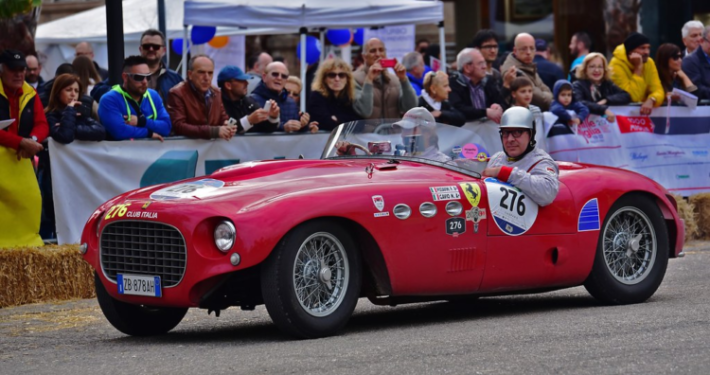Ferrari 250 MM
Two versions of the 250 MM were built, a Pininfarina berlinetta, which hailed in a whole new era in design, and a barchetta by Vignale.
Significant improvements had been made to both the engine and the suspensions with the addition of Houdaille shocks. Although the gearbox was designed with only four synchronised gears, the car was much easier to handle (the gears were much easier to change?).
In addition to victories on its home turf, the 250 MM also scored some early successes in the States with Phil Hill at the wheel.
Ferrari 250 MM Technical Specifications
Year of Manufacture – 1953
| ENGINE | ||
| type | front, longitudinal 60° V12 | |
| bore/stroke | 73 x 58.8 mm | |
| unitary displacement | 246.10 cc | |
| total displacement | 2953.21 cc | |
| compression ratio | 9 : 1 | |
| maximum power | 176 kW (240 hp) at 7200 rpm | |
| power per litre | 81 hp/l | |
| maximum torque | – | |
| valve actuation | single overhead camshaft per bank, two valves per cylinder | |
| fuel feed | three Weber 36 IF/4C carburettors | |
| ignition | single spark plug per cylinder, two coils | |
| lubrication | wet sump | |
| clutch | multi-plate | |
| CHASSIS | ||
| frame | tubular steel | |
| front suspension | independent, unequal-length wishbones, transverse leaf spring, Houdaille hydraulic shock absorbers | |
| rear suspension | live axle, semi-elliptic springs, Houdaille hydraulic shock absorbers | |
| brakes | drums | |
| transmission | 4-speed + reverse | |
| steering | worm and sector | |
| fuel tank | capacity 150 litres | |
| front tyres | 6.00 x 16 | |
| rear tyres | 6.00 x 16 | |
| BODYWORK | ||
| type | two-seater berlinetta, spider | |
| length | – | |
| width | – | |
| height | – | |
| wheelbase | 2400 mm | |
| front track | 1300 mm | |
| rear track | 1320 mm | |
| weight | 900 kg (dry, berlinetta) | |
| PERFORMANCE | ||
| top speed | 250 km/h | |
| acceleration 0-100 km/h | – | |
| 0-400 m | – | |
| 0-1000 m | – | |
Ferrari 250 MM Valuations
In August 2018 a 1953 Ferrari 250 MM Berlinetta by Pinin Farina was advertised for an excepted sale price of £7.2 Million.


